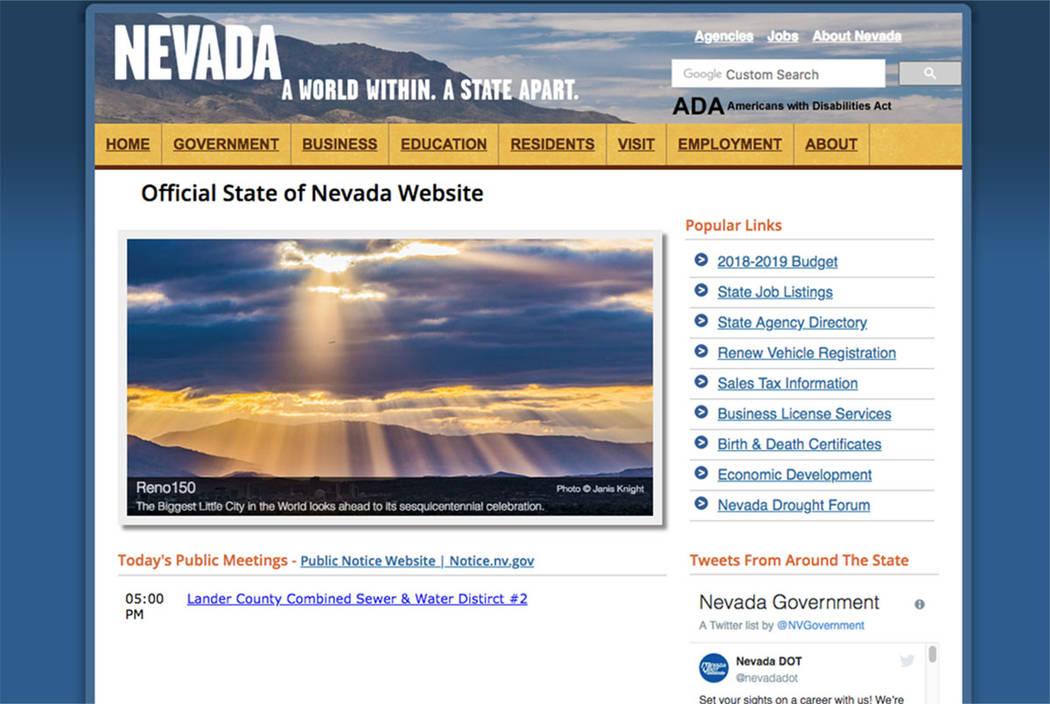Nevada transparency site graded B for accessibility

When it comes to shedding light on state spending and making those details accessible to taxpayers, Nevada ranks near the top of the class.
A new study by the United States Public Interest Research Group Education Fund ranked transparency websites for all 50 states based on content and user-friendliness. Nevada was tied for 10th nationally and scored a B for making its open government site informative and easy to navigate.
Officials from the Nevada Policy Research Institute, the think tank that publishes public employee pay and benefits, said the B grade is not a reflection of overall government transparency in the state.
“While state law mandates that all information related to the conduct of government business be provided to Nevadans in a timely manner, the state’s transparency law lacks any mechanism to hold government accountable for stonewalling public record requests,” NPRI spokesman Michael Schaus said.
Nevada’s site allows residents to view the “state checkbook” — a breakdown of revenue and spending — and the state budget. Visitors can also see which companies receive subsidies or other economic development incentives.
“When states are transparent about how they spend tax dollars, we all win: the state saves money, it can operate more efficiently and effectively, and citizens can feel more confident in their government,” said Michelle Surka, program director with U.S. PIRG Education Fund. “That’s why Nevada should continue to invest in accessible, comprehensive, online spending data.”
But Nevada has work to do, researchers said. The state could improve by allowing people to download data related to economic development subsidies, which would allow citizens to track spending patterns.
The site would also benefit by upgrading its searchability to locate specific expenditures, the report said.
Nevada officials said the website cost $78,000 when it launched. It costs about $30,000 to maintain annually.
The report is the eighth of its kind from the nonprofit watchdog group. For the first time the organization worked with focus groups to see how well Americans could navigate the sites. Many of the states’ grades dropped from previous years.
The report found that many states’ websites lack features that make them intuitive for users, such as a full search function and interactive tools. Four states received an “F” — Wyoming, Alaska, California and Hawaii.
“These sites can often be confusing for citizen users. Our focus groups put transparency websites to the test and found only a handful meet the expectations of a 21st century user.” said Rachel J. Cross, a Frontier Group analyst and report co-author.
Eight states received an “A,” including Arizona, Minnesota, Iowa and Louisiana. South Carolina and Kentucky also were given “B” grades.
Contact Ramona Giwargis at rgiwargis@reviewjournal.com or 702-380-4538. Follow @RamonaGiwargis on Twitter.













